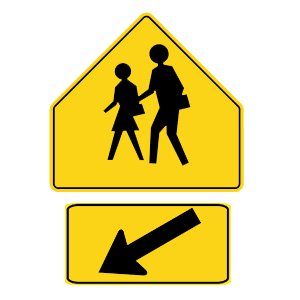2025 Maine Permit Test 7
The following questions are from real DMV written tests. These are some of the actual permit questions you will face in Maine. Each permit practice test question has three answer choices. Select one answer for each question and select "grade this section." You can find this button at the bottom of the drivers license quiz. For a complete list of questions and answers for Maine please visit https://cheat-sheets.dmv-written-test.com/en/maine/car.
Number of Tests
Number of Question
Passing Score
41. You are involved in a minor collision at an intersection. There are no injuries and there is very little vehicle damage. You should:
Explanation
After a collision, if no one has been injured or killed and you can safely do so, you should move your vehicle out of the traffic lane.
42. Many crashes are caused by:
Explanation
Many crashes are caused by drivers who are driving too fast for conditions. Always drive within the legal speed limits and decrease your speed any time conditions are less than perfect.
43. If you are driving and a tire suddenly goes flat, you should:
Explanation
If a tire blows out or suddenly goes flat while you are driving, grip the steering wheel firmly and keep the vehicle aiming straight. Take your foot off the accelerator and do not brake. Allow the vehicle to slow by itself and use the brakes gently, but only if necessary. Pull off the road when it is safe to do so.
44. At a school crossing sign, you should:

Explanation
Pentagonal signs mean you are approaching a school zone and/or school crossing. When you see these signs, be alert and prepare to stop.
45. Roads are slippery after it first starts to rain. When the road is slippery, you should:
Explanation
A wet, slippery road does not allow your tires the traction they need, so it is necessary to drive more slowly on a wet road than you would on a dry road. To reduce the risk of skidding, you should avoid fast turns or stops.
46. Which of the following blocks the smooth flow of traffic?
Explanation
Rubbernecking (the practice of slowing down to look at collisions or other out-of-the-ordinary things) contributes to traffic congestion and should be avoided.
47. When driving in traffic, it is safest to:
Explanation
Crashes often happen when some drivers go faster or slower than other vehicles on the road. Always try to drive with the flow of traffic, within the posted speed limit.
48. It is very foggy. You should slow down and:
Explanation
Use your low beams when driving in fog, snow, rain, or mist. Light from high beams will reflect off of precipitation, causing a glare and making it even more difficult to see. Some vehicles are equipped with fog lights that should be used in addition to low beam headlights.
49. If there is a deep puddle on the road ahead, you should:
Explanation
To prevent skidding on slippery surfaces, avoid especially slippery areas, such as ice patches, wet leaves, oil, or deep puddles. The safest surface for driving is a dry, solid surface.
50. You notice a vehicle defect which may affect the safe operation of your vehicle. You should:
Explanation
